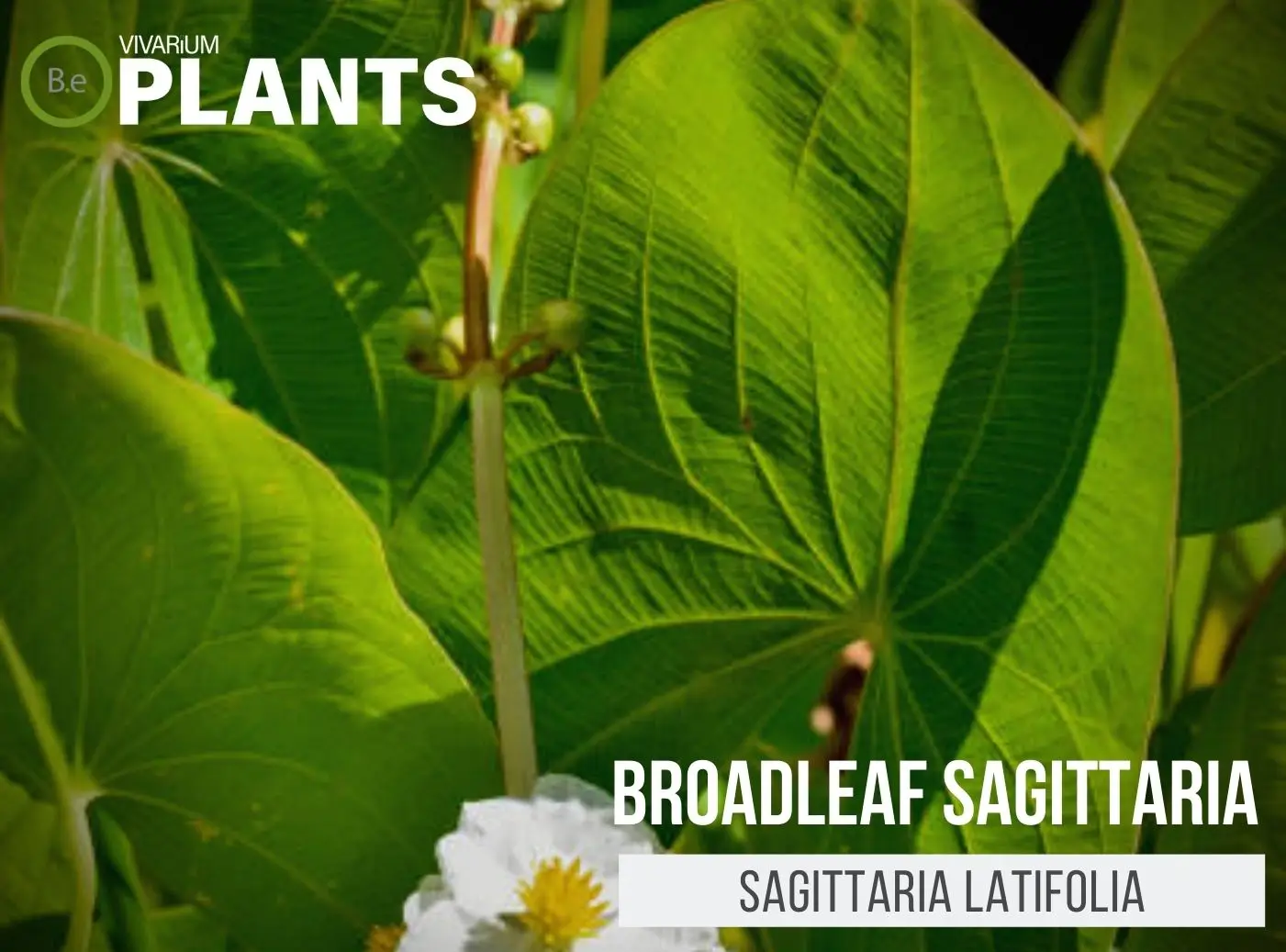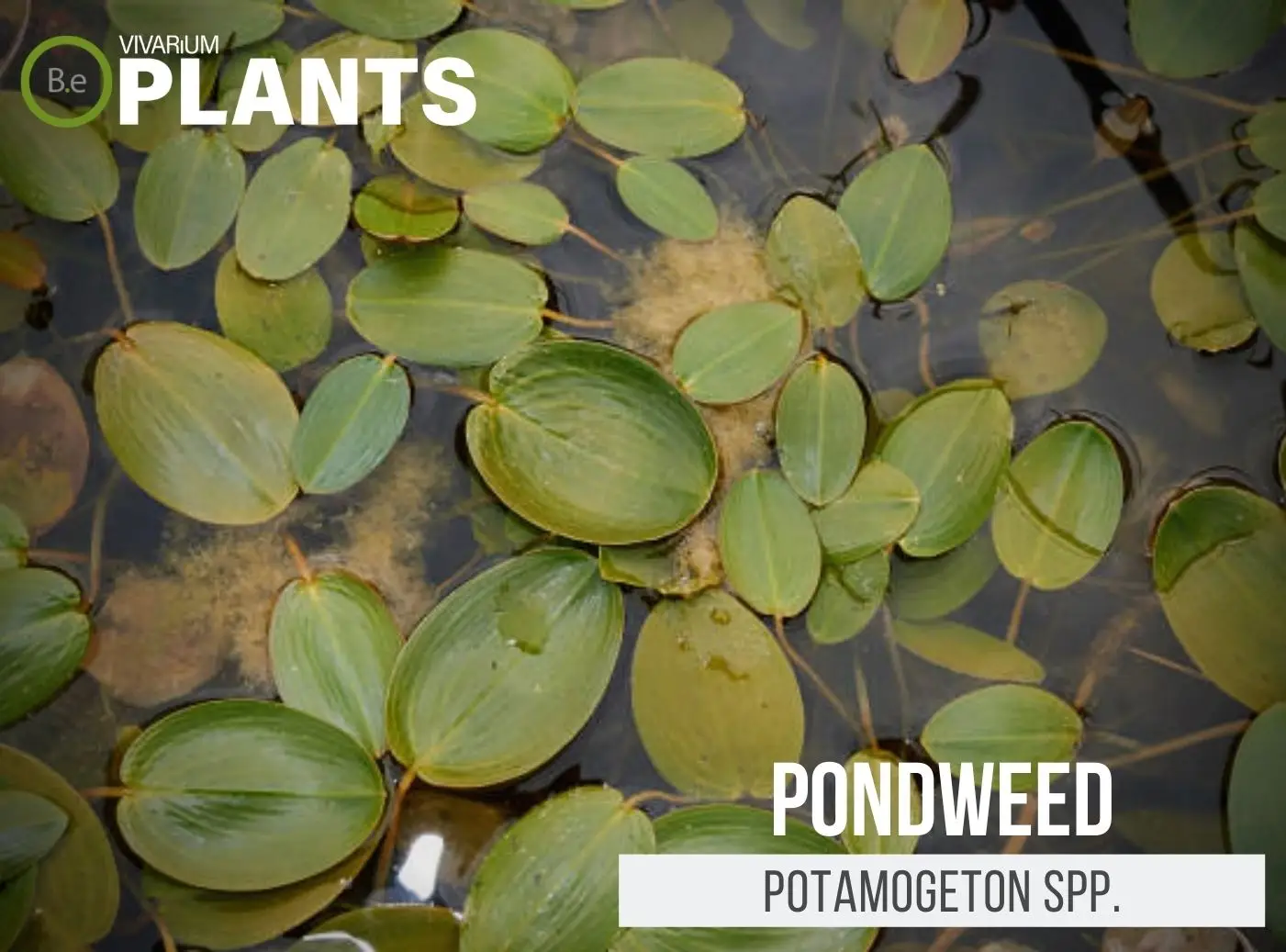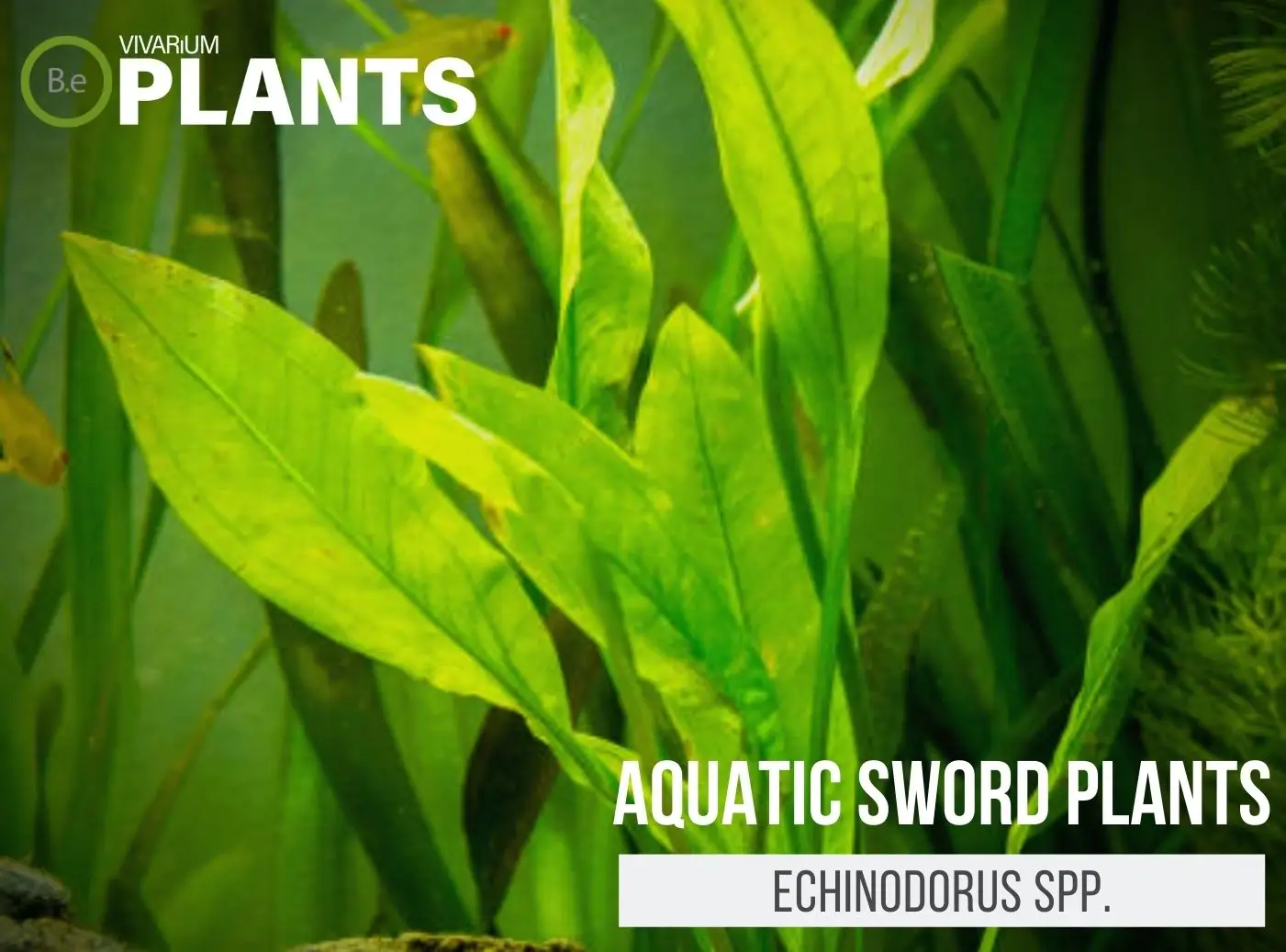If you are looking for an easy-to-care-for carpeting plant to add to your pond or aquarium, consider Dwarf Sagittaria!
It is an extremely undemanding marginal plant that perfectly suits the purpose of filling in empty spaces.
Sagittaria subulata is very common in the aquarium world due to its hardiness and low care maintenance.
Although it is used by all types of hobbyists, it seems to be a beginner’s favorite.
This article will take a closer look at the Dwarf Sagittaria, providing a complete understanding and care guide to properly growing one.
| Quick Stats: | |
|---|---|
| Scientific Name | Sagittaria subulata |
| Common Name | Dwarf Sagittaria, Needle Sagittaria, Floating Arrowhead, Awl-Leaf Arrowhead, Narrow-Leaved Arrowhead |
| Family Name | Alismataceae |
| Habitat | Marshes, Seacoast, River Basin |
| Temperature | 68°F to 82°F |
| Height | 2 - 12in |
| pH | 6.0 to 7.5 |
| Lighting | Medium to bright |
What Is Dwarf Sagittaria?
Dwarf Sagittaria is an aquatic plant commonly used in freshwater as well as brackish water aquariums.
It is a versatile species that form part of the Alismataceae family. It is quite tough and is able to spread rapidly through the use of runners.
Most of the time it is used as an aquascaping tool to decorate the mid-ground or background of a tank.
Aside from its decorative benefits, Sagittaria subulata is also helpful in providing hiding and breeding areas for small inhabitants.


Dwarf Sagittaria Facts
Dwarf Sagittaria is botanically known as Sagittaria subulata.
Aside from its scientific name, it is also commonly referred to as Needle Saggitaria, Floating Arrowhead, Awl-leaf Arrowhead, and Narrow-leaved Arrowhead.
It is part of the Alismataceae family under the Sagittaria genus.
The Alismataceae family contains 12 genera with about 80 species that are distributed in the tropical and subtropical regions of both hemispheres.
All of the species in these genera are actually very similar in appearance.
They can look so much alike that a lot of aquarists have a hard time telling them apart.
To make it even more confusing, even within the same species, the length of the plant will vary depending on the tank’s conditions.
The genus name is derived from the Latin term sagitta meaning arrow, which refers to the arrow shape of the leaves.
The genus contains about 30 species or subspecies, most of which can be found in the Western Hemisphere and some of them in Europe and Asia.
The species are all marsh plants and only a very small amount have made their way into the aquarium world; Sagittaria subulata being one of them.
This particular species epithet (Subulate) refers to the submersed leaves being slender and tapering to a point.
The plant may sometimes be sold under the synonym name Sagitteria Natans.
Description
Dwarf Sagittaria is a species of plant whose physical appearance will be influenced by the amount of light and nutrients it receives, as well as the density of planting.
The plant can grow both fully submerged and immersed, which will also affect its appearance.
Overall, Sagittaria subulata resembles grass with leaves that measure only 5mm wide. They are usually vivid green, with rounded or acute tips.
The emersed type will have wider leaves that taper to a point and look like a mini Amazon sword.
When the plant is grown fully underwater, the old emersed leaves will die off. Soon after the new leaves will begin to grow.
Submerged leaves will be narrower and a lot longer in length. The less light that the plant receives, the taller it will stretch trying to find the light.
This species is also known for creating a carpeted grassy look in the aquarium. Although, it can actually reach heights of up to 12 inches.
Occasionally, the plant will also grow a stem that reaches all the way to the aquarium surface with tiny, white flowers that bloom.
Under the right conditions, it will spread quickly and create a naturally full look.
Habitat
Since there is still a lot of confusion surrounding Dwarf Sagittaria’s term and species, it’s hard to tell for sure where the plant originates.
Assuming that the Dwarf Sagittaria used in the aquarium world is only one species, it is native to the southeast of the United States and South America.
In nature, it can be seen growing in both freshwaters as well as brackish water.
Some of the places it is commonly seen in our estuaries, along the seacoast, marshes, ponds, and river basins.
Recently, the species was also identified to be invasive in Indonesia, the Azores, and Great Britain.
Given its wide distribution, Dwarf Sagittaria is not very sensitive to temperature changes. It can withstand temperatures anywhere from 59° to 84°F.
However, the ideal temperature for optimal growth falls anywhere between 64 to 79 degrees Fahrenheit.
pH Preference
Dwarf Sagittaria seems to do quite well in a variety of conditions, even very hard and alkaline water.
The pH level of water measures the relative acidity or alkalinity based on a scale of about 0 to 14. A pH of 7 represents neutral levels, meaning neither acidic nor alkaline.
Even though the hypothetical range of pH is actually a lot wider when it comes to plants the range used is typically between 4 (highly acidic) and 10 (highly alkaline).
The ideal pH for Sagittaria subulata to thrive is in a moderately acidic to a slightly alkaline range of 6.0 to 7.5.
Vivarium Type
Due to its numerous growth habits and high tolerance, Dwarf Sagittaria can easily grow in a variety of vivarium types.
When choosing the exact type of enclosure that the plant will be placed in, always make sure to go with setups that have substantially aquatic features.
In addition, the specific enclosure type and setup will have to change depending on how the plant will be grown; emersed, fully submerged, or both.
Here are recommended vivarium Sagittaria subulata will do well in:
- Paludariums – Half aquatic/ half terrain-based enclosure.
- Ripariums – Mostly aquatic-based enclosures with some terrain features present.
- Aquariums– Fully aquatic-based enclosure with little to no dry terrain.
Vivarium Placement
Dwarf Sagittaria is a fully aquatic species. With that in mind, the plant will not do well in dry areas that lack a proper amount of water.
The exact placement of the species will usually vary depending on the size of the enclosure and how much light the plant will be given.
In larger tanks, Sagittaria subulata can be planted in the foreground. Moderate amounts of light should be provided so that it can grow as a dense and thick carpet.
This will be very aesthetically pleasing and not block off other plants or decorations behind it.
On the other hand, in smaller tanks, this species is usually grown as a mid or background plant.
Those areas tend to receive less direct light, which will result in the leaves growing much taller toward the surface.
They do so in order to try and reach the areas that are closer to the light.
As a rule of thumb, having large distances between plants will make the leaves grow shorter while planting close together will encourage vertical growth.
Substrate
Dwarf Sagittaria will do best in a nutrient-rich aquatic substrate, especially with substantial amounts of iron.
This particular species is easily affected by iron deficiencies.
If it does not get enough iron, its leaves will begin to fade away and turn a yellowish color.
Whatever substrate is chosen should contain iron, phosphate, potassium, nitrate, and trace elements to make the plant grow stronger.
An alternative solution to finding a rich substrate will be the use of supplementation.
Regularly adding liquid fertilizer is another safe option, as long as it is done properly.
A good example of a fertilizer that can be used would be Seachem Flourish Excel Bioavailable Carbon.
Keep in mind that the product should not be used when cycling the tank.
It has antibacterial properties, which can end up killing beneficial bacteria and disrupting the cycle.
Last but not least, S. subulata should not be planted on a coarse substrate.
This species has delicate roots that will not be able to properly penetrate a rough substrate.
Small-grained substrates like sand or fine gravel will be the best options.
Lighting
Dwarf Sagittaria will only need moderate amounts of lighting to survive.
This can be described as at least 3 watts per gallon, although it will grow much better with higher lighting.
In fact, the only way that the plant will achieve its carpet look is if it receives the proper amount of light.
Without sufficient aquarium lighting, Sagittaria subulata will not spread horizontally.
The plant will begin to grow vertically and can grow quite tall in an attempt to reach the light.
In a perfect scenario, any vivarium containing the species should use fluorescent lights and T8 or T8 bulbs.
LED lights may also be used. However, their success in providing enough light will depend on the quality of the lights.
Always make sure to check and buy a good quality product.
Buy Dwarf Sagittaria
Buying Dwarf Sagittaria can sometimes be a tricky ordeal.
It is not uncommon for the plant to be mislabeled or for other species to be sold using its name.
With that in mind, it is important to pay close attention and do some research before just simply picking up the first sample seen.
Always buy from trustworthy and reputable sources that have overall good reviews.
Whether it is a physical or online store should not matter.
Make sure to ask plenty of questions until you are satisfied that the specimen you are getting is the right one.
In addition, buying a healthy plant that does not have any preexisting conditions, will undoubtedly increase the odds of it growing successfully inside the vivarium.
For starters, avoid any cracked, yellowing leaves, that have dead tips or are torn.
Also, make sure that the foliage is bright and green.
Click the image below to find out more about the current price and other relative info on Sagittaria subulata for sale:


Dwarf Sagittaria Care and Propagation
Growing and maintaining Dwarf Sagittaria is fairly easy compared to other carpeting plants.
This is a species that can tolerate a wide range of water conditions and does not require too much upkeep.
However, there are a few things that should still be kept in mind.
The main factors of the plant’s success will be a nutrient-rich substrate and the amount of light provided.
To make sure that the plant forms a compact green carpet, a sufficient amount of good-quality light must be provided.
Nonetheless, there is no need to worry if that is not possible.
In lower lighting scenarios, Sagittaria subulata will not die. Instead, it will adapt and change its growth pattern in order to survive.
How to grow
Dwarf Sagittaria propagates through the use of runners, like many other carpeting plants.
Most of the time it will propagate all on its own and not need any human interaction.
The runners will branch off the root area and develop into a new plant.
As long as enough light and nutrients are provided, the plant will spread to the sides and create a dense carpet.
Single stems can also be manually pinched off and then planted somewhere else.
Each stem must have some sort of root growth already on it.
Then, simply place the stem into the substrate and make sure that all of the roots are buried.
Water Requirements
Dwarf Sagittaria is usually grown fully submerged or emersed and for that reason, it will not require constant watering.
It will automatically take whatever water it needs from being underwater.
However, the species will most definitely like a very nutritious diet.
Moderate amounts of CO2 can always be added to give the plant a nice boost in growth and health.
Periodic water changes will also help make sure that the water conditions are kept within proper ranges.
Plants Similar To Dwarf Sagittaria
Adding diversity to an enclosure is key to an aesthetically pleasing enclosure.
Try mixing up the look of your vivarium with different flora that can easily co-exist in the same types of environment.
Furthermore, if for some reason you find this plant hard to acquire or would like to consider something similar…
Here are some other aquarium plants you might find very similar to Sagittaria subulata:
Conclusion
Dwarf Sagittaria is a great option for those of you searching for a grass-like marginal plant that can be easily grown.
It is a relatively easy-going plant that will adapt to its environment in order to fight for survival.
Aside from being very undemanding, it also creates a beautiful look in any vivarium.
If you have any experience keeping Dwarf Sagittaria, what were your favorite qualities of the plant?
Frequently Asked Questions
Dwarf Sagittaria grows up to 12 inches in height.
Yes, Dwarf Sagittaria is easy to grow and is an ideal choice for newcomers to aquatic gardening. It will tolerate a wide range of water conditions and can thrive in full to low light. Additionally, it is also very undemanding and can be easily propagated through clippings.
Yes, Dwarf Sagittaria does need CO2 in order to grow and thrive. CO2 is essential for photosynthesis, and providing enough of it helps ensure proper nutrient uptake and healthy growth. CO2 is typically provided to aquariums with a pressurized CO2 system or a diffuser.
The best light for Dwarf Sagittaria plants is medium to high indirect light. They can tolerate direct sun for short periods of time if gradually introduced. Dwarf Sagittaria plants prefer a humid environment and should not be allowed to dry out.
Planting Sagittaria Subulata requires making sure the area is moist, and digging holes 4–5 inches deep. Place the plant in the hole and fill the hole with soil and water thoroughly. You can fertilize the Sagittaria Subulata by mixing a slow–release granular fertilizer into the soil.
1. Water Sagittaria Subulata regularly, providing enough water so that the soil is evenly moist but not soggy.
2. Plant Sagittaria Subulata in nutrient-rich soil that is kept neutral to alkaline, with a pH of 6.0 to 8.0.
3. Provide adequate sunlight for Sagittaria Subulata; lightly shaded areas are ideal.
4. Fertilize Sagittaria Subulata once a year in the spring with a 10-10-10 fertilizer.
5. Cut back Sagittaria Subulata after flowers have faded to encourage further blooming.
6. Regularly check for pests on Sagittaria Subulata and treat them if needed.
Yes, you can trim Sagittaria Subulata. Properly trimming will help the plant stay healthy and encourage new growth.
Yes, Sagittaria is a fast–growing plant that is known to spread quickly in its preferred environment.
Sagittaria Subulata should be kept in temperatures between 20–30°C (68–86°F).



